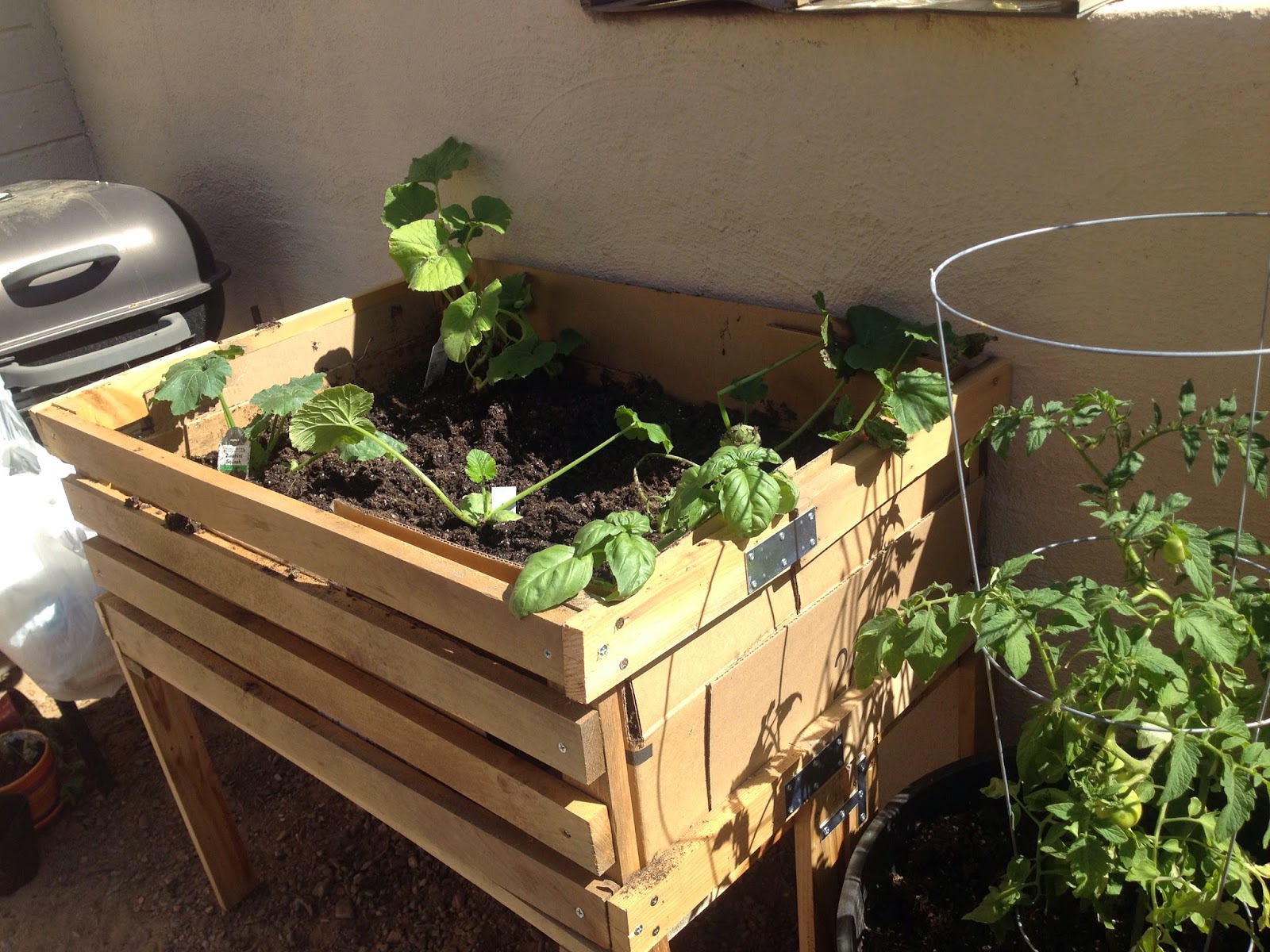Though I don't have much space I figured I could use what I already have in my possession to make a garden work. I looked over to my right where I have stack of empty boxes (don't ask why) and began to wonder if it was possible to turn an empty box filled with soil into a garden. I searched online to see if there was any reason NOT to use a box to grow a garden and found this website. It gave some good suggestions and tips regarding cardboard box usage in gardens and I am glad I found this website because I used it to inspire me to make this:
How is this a "cardboard garden"? You ask. Well, it is and it was so much fun to make! The wooden box is lined with cardboard and I used two boxes to plant some of the plants I bought that wouldn't fit into the raised garden bed. Here is what they look like:
The box on the top is Bush Beans (which are in the legume family and not allowed on Paleo…guess I wasn't thinking clearly when I bought them) and the box on the bottom has two zucchini plants.
When I was at the nursery, I bought what I thought was cucumbers and zucchinis but turns out I bought 7 zucchini plants!!!! Assuming they produce vegetables, I will be swimming in zucchini by the end of summer!
Now onto the process for making the Cardboard Garden raised bed.
About seven or eight years ago, while I was living in a different apartment, I went to a local craft store and saw that they had wooden shelves for sale. For years I lugged them around to all my different apartments and used them for craft supply storage but when I moved to my current shoe box (a.k.a. apartment), I had no room for them inside so I put them outside and used it as a holder of junk where they became weathered by rain and plenty of sunshine. When I decided to make the cardboard garden, I looked around for a way to elevate the garden so it wouldn't be on the ground and possibly subjected to Frankie's "business" of lifting his leg or other dog activities. When I looked at my shelves I started to formulate an idea that I think my dad would be very proud of: use what I already have! Talk about reduce, reuse, recycle! All I needed to buy was screws and metal brackets to make my dream a reality. (Sadly, I didn't take pictures at every step of the process but I think you can figure out how the elevated bed came to be.)
Here are some pictures to show the process:
Step 1: Remove the junk from the shelves:
Step 2: Cut each leg just above the bottom shelf to make 2 "stands":
 |
| These two "stands" used to be the top of the shelves; they stand about 18 inches tall. |
 |
| These two "stands" used to be the bottom of the shelves; they stand about 14 1/2 inches tall. |
Step 2: Attach the taller stands together with metal brackets (No picture, sorry)
Step 4: Cut the legs of one of the shorter stands down by 5 1/2 inches and then attach the legs end to end with metal brackets to make a cage. (No picture, sorry again)
Step 5: Place the stand cage on the 18 inch tall stands and attach with metal brackets. (There is a lot of metal holding these rickety shelves together and one day I think the only thing that will be left are those metal pieces!)
 |
| If you notice the metal plates on the side of each leg, that is what I did in step 4. |
Step 6: Place where it will live and line with cardboard (hence Cardboard garden):
Step 7: Fill with soil (I bought 2 large bags of organic soil from the nursery around the corner):
Step 8: Wet the soil to prepare it for the plants and then place the plants in the desired locations:
There you have it…my cardboard garden.
What I have planted in this box is Black Beauty Zucchini, Basil, Spaghetti Squash, and Dark Green Zuchinni. (yes, I am insane for having so much zucchini and I will be taking some to work but what can I say? I love zucchini!)
I will be making signs for each of my plants so I will remember what the heck I planted!
Two more things:
1) There was blood shed (and plenty of sweat) in the production of this box…I thank the stupid palm tree for this unprovoked attack on my innocent pinky:
2)I can't end this post without mentioning dear Frankie boy who has a very nice shaded hiding spot:
Oh and that green plan off the right of Frankie? That is the first addition to my garden, the plant that started it all: "Early Girl" Tomatoes!
YUMMY!!!
Thanks for stopping by,
Emma #1






















